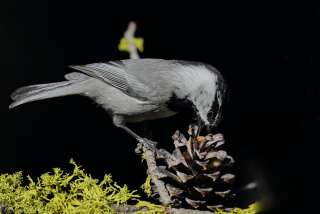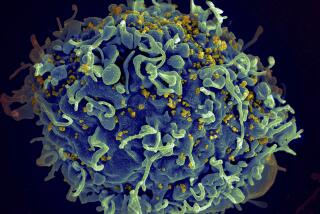Small birds may be able to cope with climate change, study says
Despite the potential havoc wreaked by climate change, it’s not all doom and gloom for our planet. A new study projects that certain types of short-lived, small birds will easily withstand global warming throughout this century, even under worst-case carbon emissions scenarios.
Most studies predicting species’ fates due to global warming rely on models that assume species can survive only in the environmental conditions in which they currently live. But doing so ignores the possibility that species can adapt to a changing environment, said Ben Sheldon, an ornithologist at the University of Oxford and the senior author of the study, published Tuesday in PLOS Biology.
There are two main ways species can cope with a rising thermostat — by evolving or by being versatile. The former requires genetic changes in a short amount of time within a population. The latter, a concept biologists call phenotypic plasticity, involves adjusting to fit in, like a high school kid who can float in the nerd, jock and Goth crowds. For a bird, it means changing appearance or behavior to take advantage of a changing environment. Sheldon and his team wanted to know which mechanism, if any, birds were using to adapt to climate change.
For more than 50 years, scientists had been monitoring birds called great tits in a woodland near Oxford. The famed ornithologist David Lack established the study site in an area called Wytham Woods, setting out nest boxes for the resident great tits and recording every aspect of the population’s dynamics.
Great tits are especially useful for studying adaptation because their behavior is tightly linked to an environmental cue: They lay their eggs to hatch when their prey, winter moth caterpillars, are most abundant. The caterpillars’ emergence is based on the time at which trees blossom in spring, which in turn is affected by temperature.
Sheldon and his predecessors made and studied records of temperature, timing of caterpillars’ emergence and birds’ first egg laying, and changes in the bird populations to see if the great tits’ egg-laying behavior had changed as the climate warmed over the last 50 years. They found that on average, the birds had shifted their egg-laying time two weeks earlier in the year since the study began in 1960.
Though some female birds only reproduced once in their lifetime, many reproduced in multiple years (some up to nine times). Females that had multiple clutches were able to adjust their egg-laying time year by year as temperatures varied. Sheldon and his team could tell that the adjustment to temperature was due to phenotypic plasticity — and not rapid evolution — by approximating the degree to which egg laying was controlled by genetics.
With past behavior established, Sheldon’s group turned to the future. Given a warming climate, how would the birds respond down the line?
They fed their historical bird data into a model that simulates the birds’ ability to respond to climate change, and estimated their fate based on low-, medium-, and high-carbon emissions scenarios (and the accompanying rises in temperature).
Even under the high-emissions scenario, the scientists projected the great tit population would be stable at the end of this century, due to the birds’ behavioral versatility and their ability to evolve. Even if they suddenly lost the ability to shift egg-laying behavior, Sheldon’s team gave them about a 40% chance of being able to evolve fast enough to ensure survival.
When they adjusted the model to see how longer-lived, larger birds might handle climate change, they found that such species would not fare as well. Their longer generation times meant they could not evolve as quickly, making them that much more dependent on behavioral flexibility to survive. That could be bad news for big birds like condors, albatrosses and Sesame Street’s most popular resident.
“This approach gives us a way to understand which species we have to worry about most,” Sheldon said.
Return to Science Now.
Follow on Twitter: @BradBalukjian






